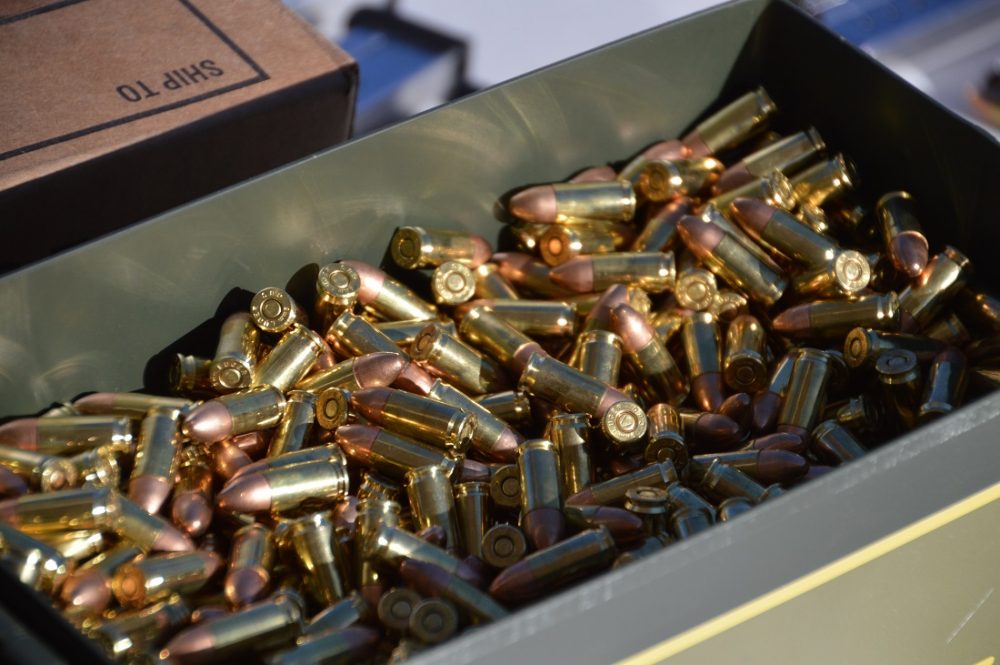With many investing substantially in lead and brass these days, we are here to answer your questions about safe and reliable ammunition storage.
Where Should You Store Ammunition?
As explained by the Sporting Arms and Ammunition Manufacturers’ Institute, the firearms industry group that standardizes cartridge loading specs, ammo should be stored in a “cool, dry location away from solvents, heat sources, or open flames.”
SAAMI recommends that ammunition should be stored in its original packaging or in packaging designed specifically for that purpose. This helps avoid confusion on just what caliber, load, and vintage the ammo is at a glance. Sure, factory headstamps can be deciphered and should be verified before you load a firearm or magazine, but keeping rounds in their original boxes helps keep you ahead of the curve.
Speaking of safety, it is generally advised to keep ammunition stored separately, and securely, from firearms that are not in use. This can help avoid unauthorized access to loaded firearms.
Weather/Elements
A good way I like to keep my ammunition cool and dry is in GI-style ammo cans. These can be bought surplus at a variety of places including Army-Navy stores and online in both new and used conditions.
To ensure the cans are up to snuff, I typically check a few things to include that the rubber seal is in good shape, and the can locks up tight. A good test of an unsure can is to put a roll of toilet paper inside, close and latch the can, then put it in a tub of water overnight. If the TP comes out untouched, odds are the can is airtight. A more low-key solution is a tight-sealing plastic container, such as Tupperware.
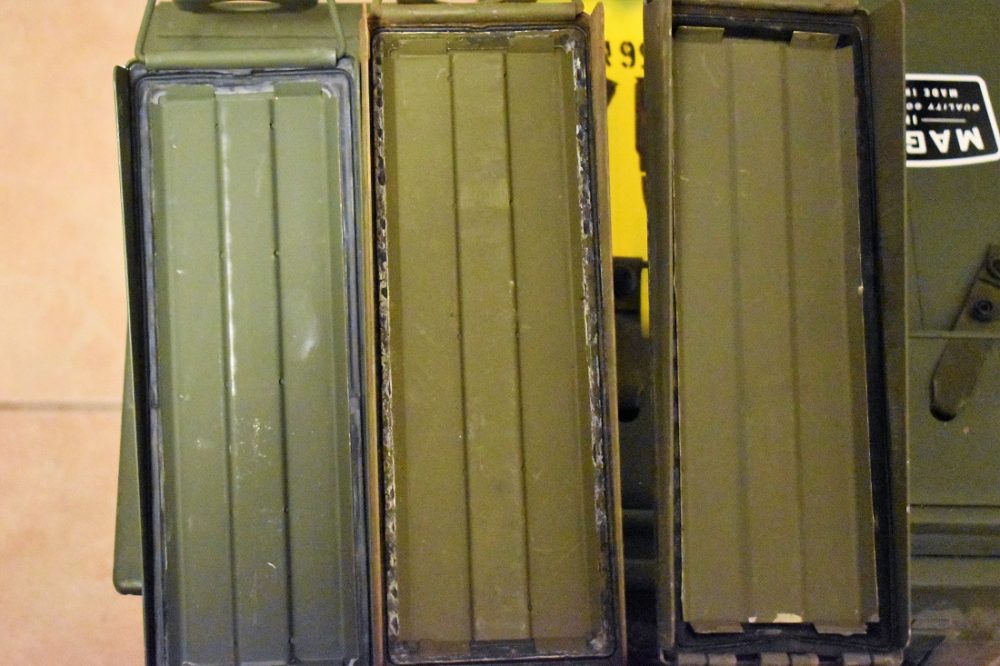
Be sure to check the seals on your cans. They are often a mixed bag. A good retrofit for old ammo cans is to coat the inside in Flex Seal or some sort of similar rubberized sealant spray coating. (Photo: Chris Eger/Guns.com)
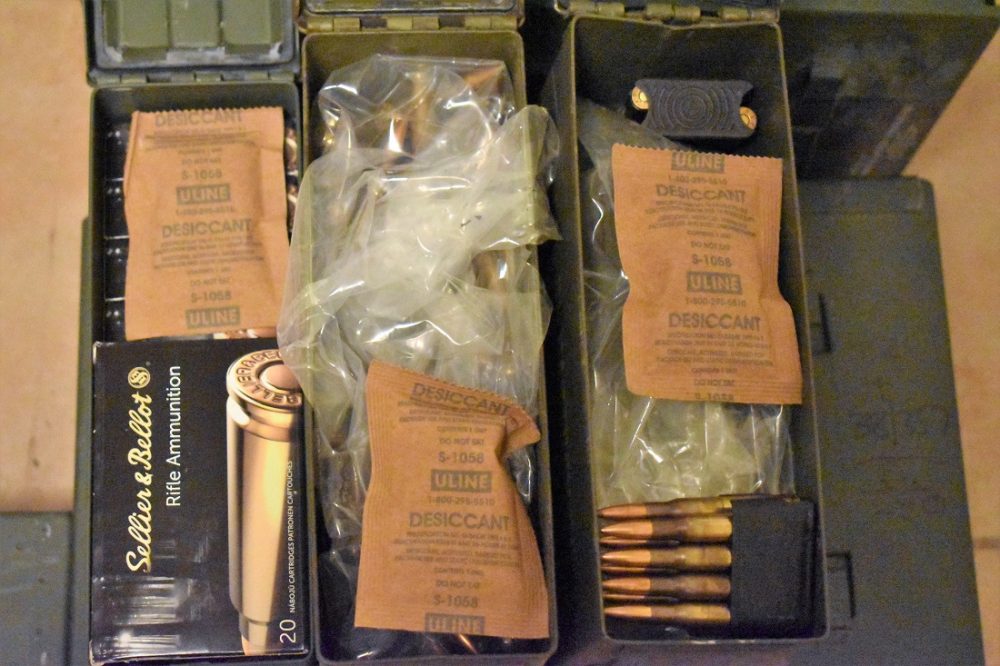
I typically store ammo inside the can with plastic bags– in case of some sort of unforeseen water intrusion– and a desiccant pack. Be sure to rotate/reset your packs as directed. Ideally, keep ammo in its original box inside the can. Importantly, once you close the can, leave it closed, because every time you open it new air, bringing its friend humidity, gets in. (Photo: Chris Eger/Guns.com)
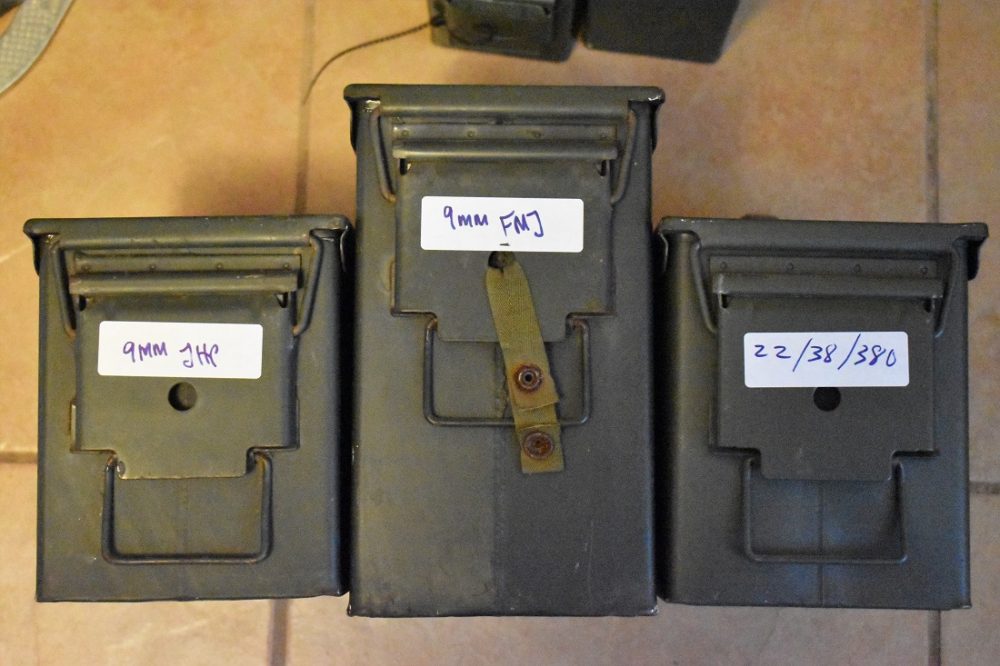
As a side, it is easy to sort ammo by caliber or purpose in different cans. (Photo: Chris Eger/Guns.com)
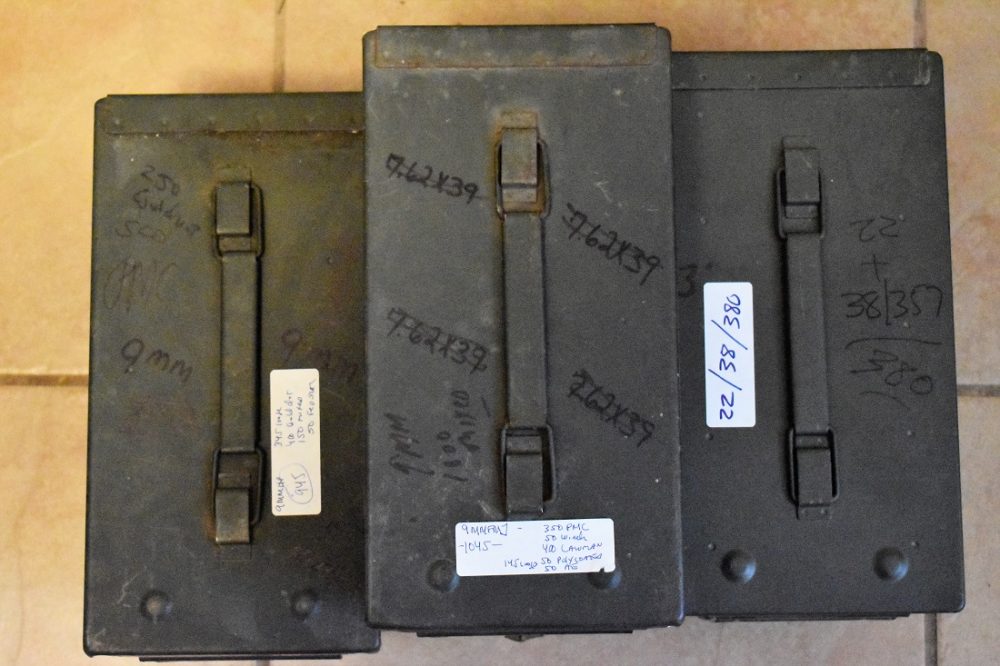
I log mine with simple Avery type labels so I can tell at a glance what is in each can. When the inventory changes, slap a new label on. (Photo: Chris Eger/Guns.com)

You can also go larger, such as applying stickers or stencils. The left can, for example, has unloaded Magpul mags. The center can, 5.56 NATO rounds, the right can, loaded Magpul mags.
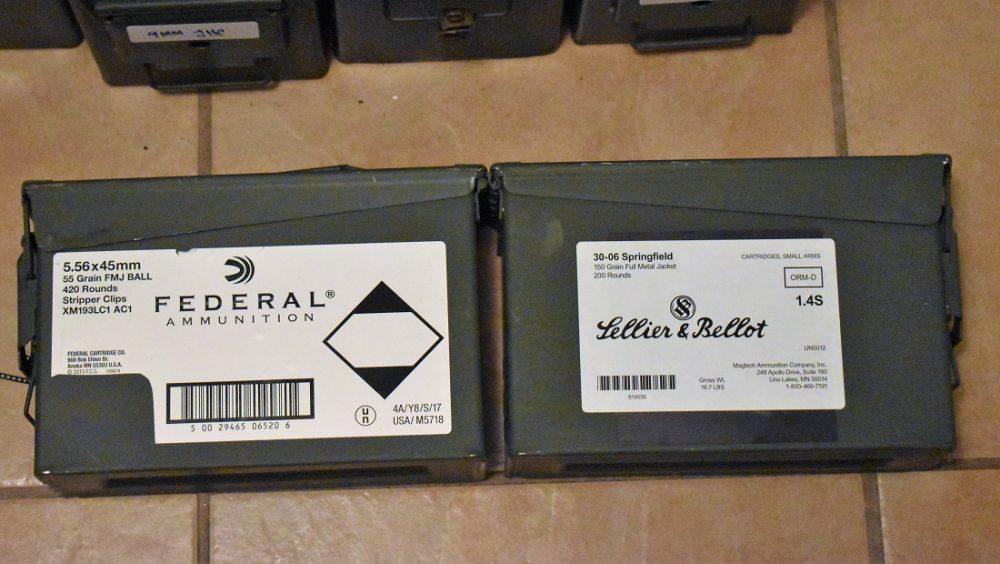
Many manufacturers also sell new ammo loaded in military cans or sealed in rubberized “battle packs.” (Photo: Chris Eger/Guns.com)
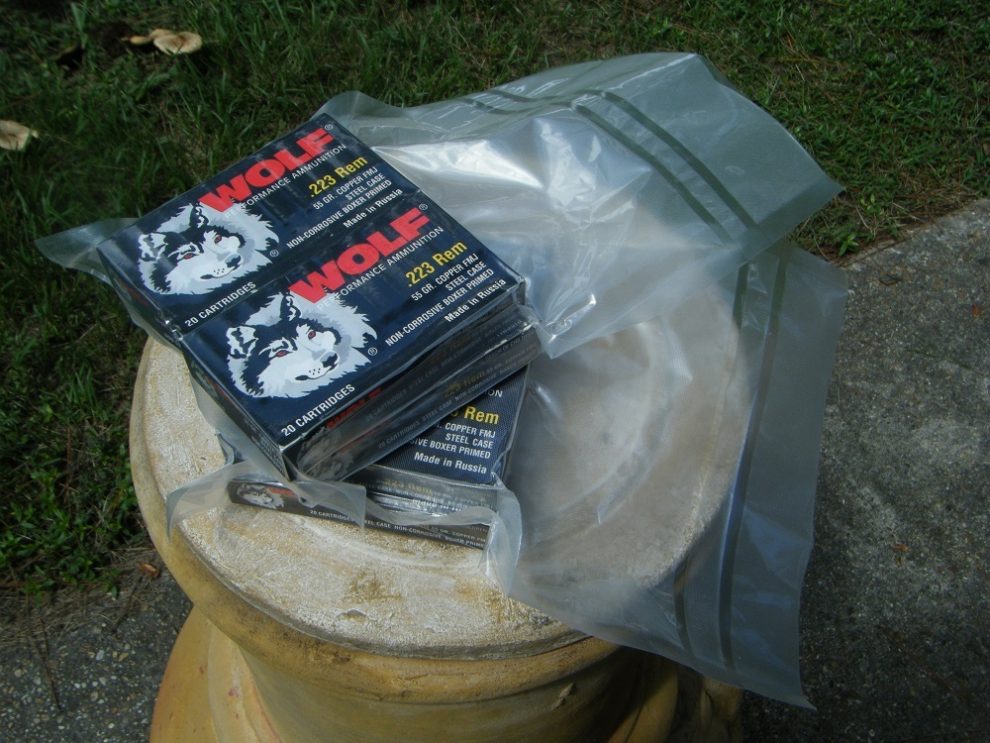
Redneck battle packs, done with kitchen vacuum sealers, are also an option, although there is some debate in online forums over the efficacy. (Photo: Chris Eger/Guns.com)
Where Should You Not Store Ammunition?
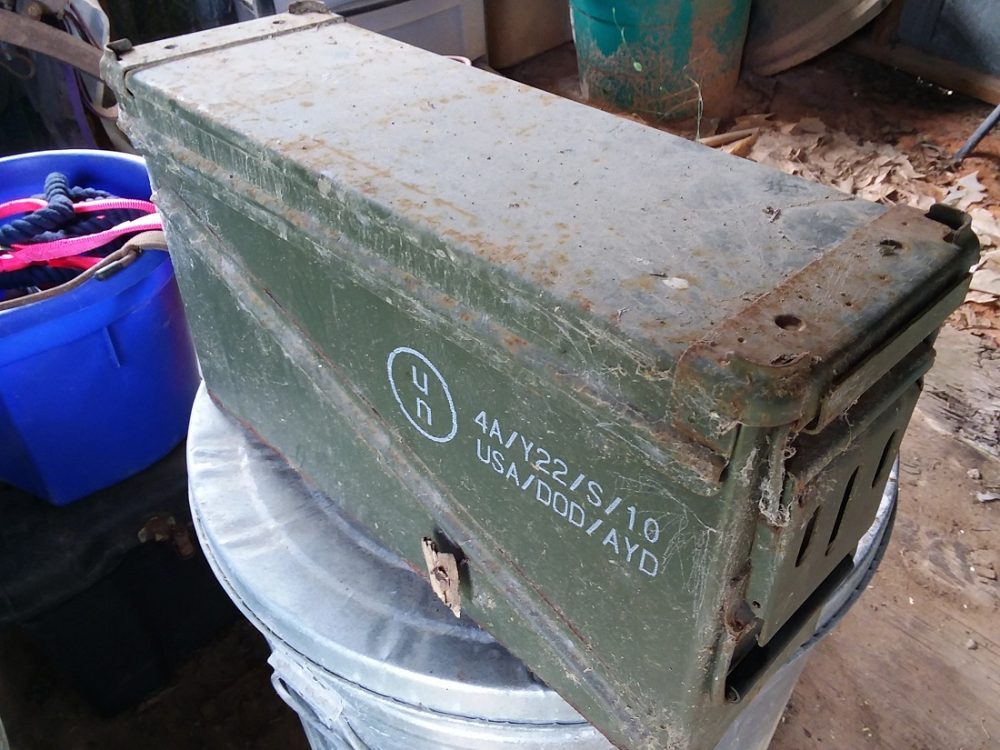
While ammo cans may help “keep your powder dry,” leaving the can in a hot and leaky outbuilding long enough largely negates that. (Photo: Chris Eger/Guns.com)
The other side of the coin on smart ammo storage is to remember to keep your stockpile away from hot or wet areas. By extension, this means avoiding storing ammunition away from non-climate controlled areas such as garages, barns or outbuildings or places where it may have direct exposure to sunlight. Likewise, storing ammo for long periods in vehicles will subject it to elevated temperatures.
The cooler and drier your ammo is, the better. For example, I have a central closet in my home that does not share a wall with any water pipes or HVAC/water heater components that I have converted to my Bullet Room, complete with a simple dehumidifier, fire-rated door, and high-speed lock.
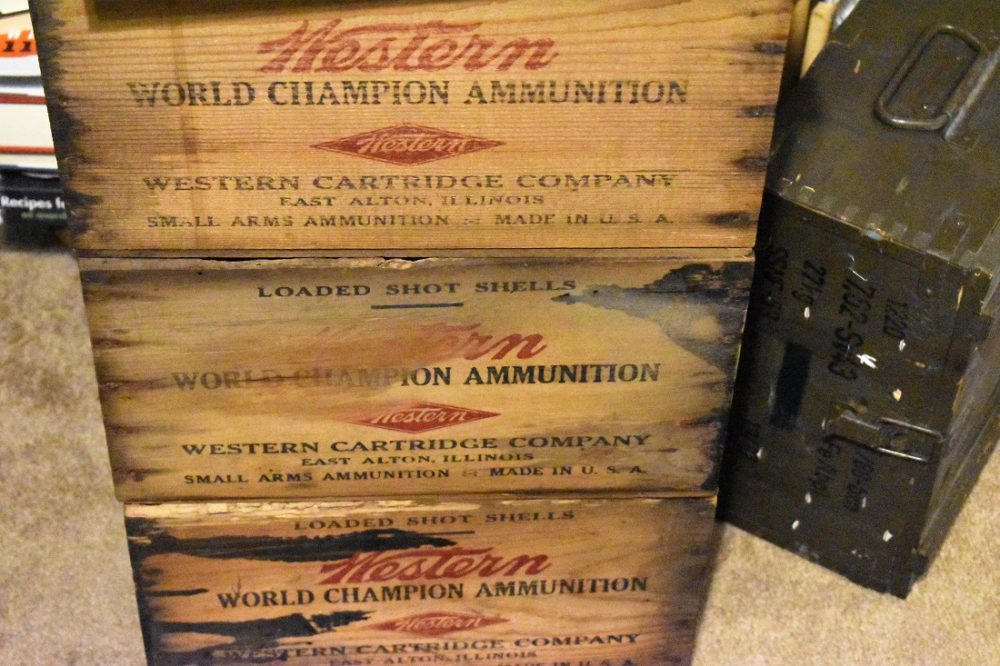
Another pitfall to avoid is to steer clear of storing ammo in vintage boxes. While super collectible and aesthetically pleasing, they are open to the air and will do little to protect your investment. (Photo: Chris Eger/Guns.com)
Does Ammunition Go Bad?
You open up your safe and reach inside only to be greeted by a waft of long-expired ammo, with flies circling the putrid remains of your once-fresh boxes of cartridges.
No, this is not a thing.
However, over time, the primers and propellants used in the manufacture of ammunition will break down and deteriorate. The guidelines on just how fast this occurs are something that is up for conjecture.
Leading ammunition manufacturer, Federal, notes on their website that, “If stored properly, loaded ammunition has a 10-year shelf life.”
With that, there is plenty of anecdotal evidence that ammunition can often last much longer, especially in military surplus loads that have been armory stored with an eye towards future use by later generations.
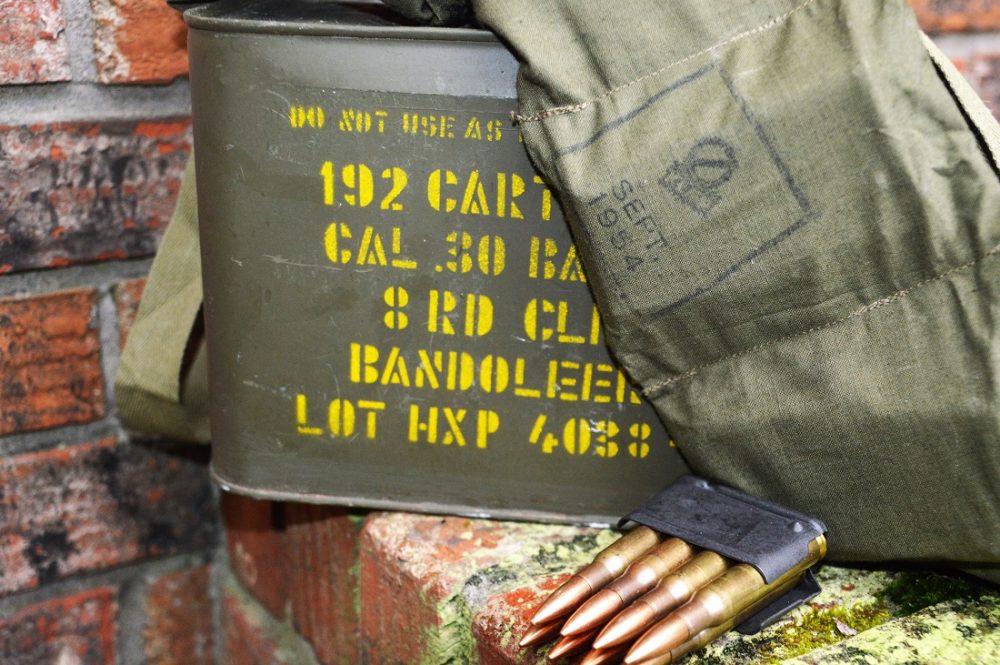
These vintage military loads, a 1970s Greek spam can of .30-06 and some circa-1954 Norwegian M2 ball, are still relatively fresh and proved reliable in testing. Likewise, the author has shot Turkish 8mm Mauser leftover from the 1950s and Austrian 8×56 Steyr from the 1930s with good results. With that being said, always inspect any ammo before use, whether it is brand new or decades old. (Photo: Chris Eger/Guns.com)
Before using any ammunition, be sure to inspect it for signs of physical damage. This includes corrosion, significant discoloration, dents, and heavy scratches. Never use a cartridge or shotgun shell that shows signs of swelling, splits, or just “feels different” from the rest. Better safe than sorry.
It’s best to rotate ammunition, shooting the oldest of your stock at regular range trips. In law enforcement and security use, typically officers will expend their duty ammo at each qualification, be it quarterly or biannually, replacing it with fresh rounds after they clean their gun. Well, that’s the policy anyway. A good takeaway from that is for consumers who utilize a firearm for personal or home protection to also consider rotating their “good stuff” that is chambered or loaded in their mags. This can help avoid problems such as set-back as well, a subject that is probably best addressed in another article.
In the end, no matter how much you spend on ammo, if you safeguard it through proper storage, it will never be money wasted.
NOW CHECK ON THOSE GREAT AMMO DEALS
The post Tips for the Best & Worst Ways to Store Ammo appeared first on Guns.com.
Powered by WPeMatico


